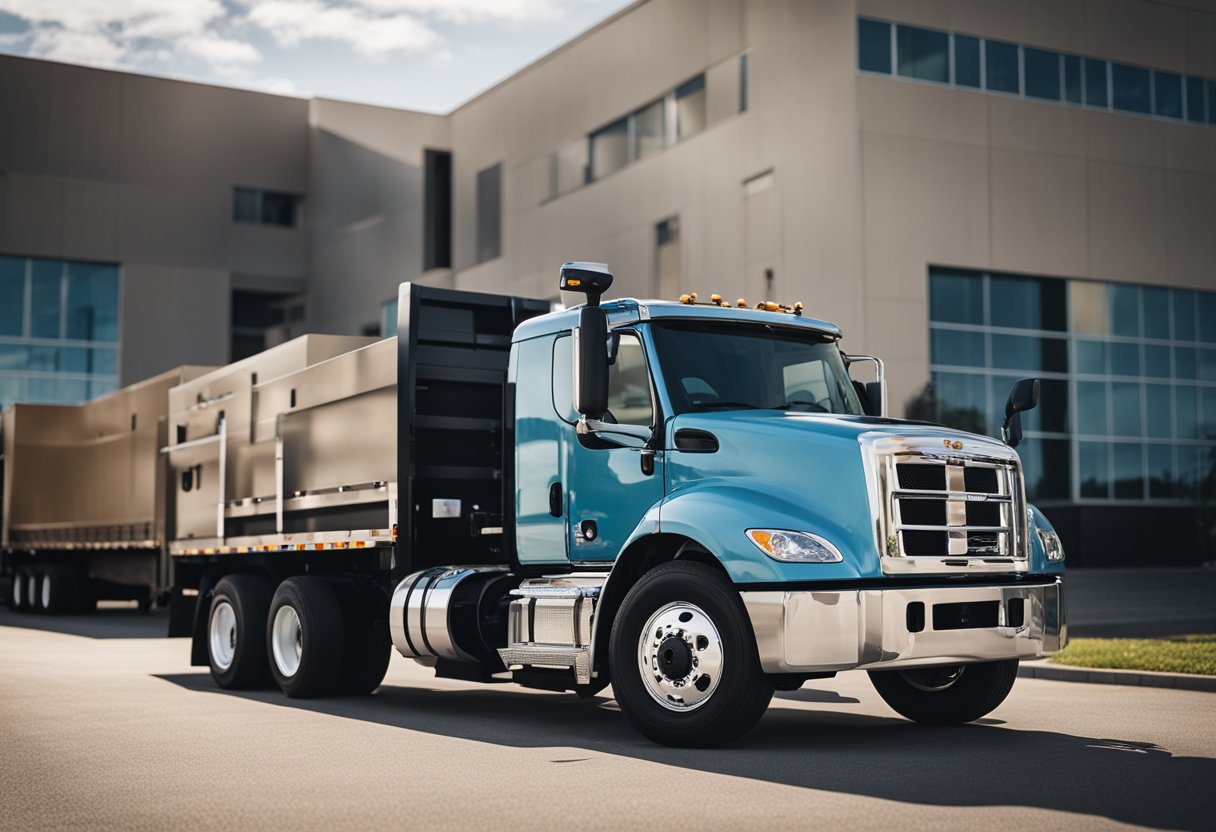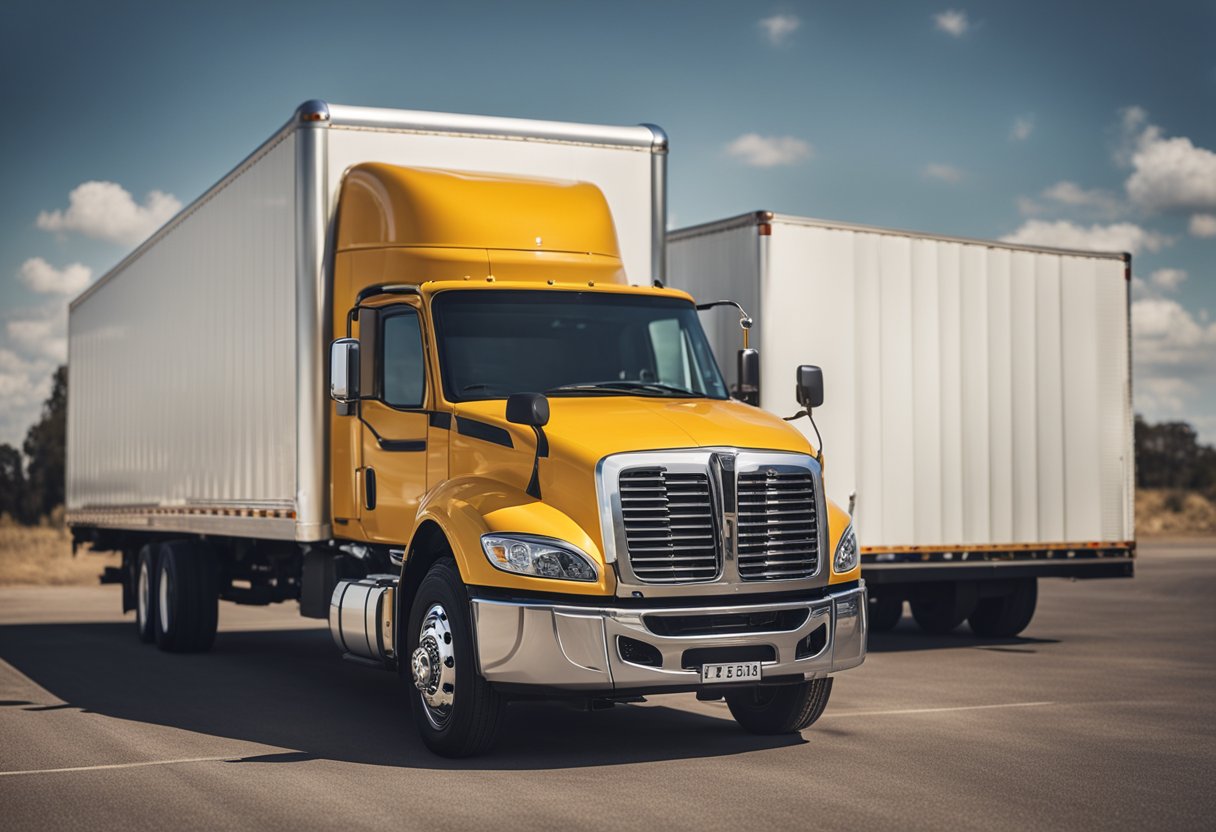When discussing pickup trucks, a frequent question is about the size of a long bed truck. I understand that the term “long bed” refers to the length of the truck’s cargo area. Typically, a long bed truck has a bed over eight feet in length. This extra length offers greater cargo space, which can be crucial for hauling larger items. Long bed trucks are a preferred choice for those needing to transport building materials, machinery, or other long objects that require the additional space.

While long bed trucks offer ample space, they also affect the overall vehicle length and maneuverability. This makes them less ideal for tight urban parking and can add to the challenge when navigating narrow spaces. However, their size and payload capacity are indispensable for certain tasks and industries, including construction and agriculture. Different models come with a variety of features, trim levels, and towing capacities, allowing potential buyers to choose a truck that best fits their specific performance and utility needs.
Contents
Key Takeaways
- A long bed truck typically has a bed over eight feet in length, providing substantial cargo space.
- The size of the truck bed impacts maneuverability and vehicle length.
- Long bed trucks have diverse features and capabilities across different models and trim levels.
What Defines a Long Bed Truck?

When discussing truck bed sizes, a long bed truck typically refers to the longest standard bed size available on a pickup truck. It provides substantial cargo space, distinguishing it clearly from standard and short bed variants.
Understanding Bed Length
A long bed truck usually measures more than eight feet in length, making it the preferred choice for hauling large items that require extra space. This bed size is specifically designed for demanding tasks such as transporting construction materials or heavy equipment.
Comparison with Standard and Short Beds
In contrast, standard beds are often around six to six and a half feet, while short beds, also known as sport beds, are typically five to five and a half feet in length. A long bed truck offers more space compared to these sizes, ensuring that it can accommodate larger loads and longer items without the need for an overhang or special arrangements.
Popular Long Bed Truck Models

I find it essential to highlight some of the popular models when discussing long bed trucks, as bed length significantly impacts utility and functionality. Each model listed here offers varying bed lengths, and the long bed variations are often the choice for those needing maximum cargo space.
Ford F-Series
The Ford F-Series, notably the Ford F-150, offers a long bed option usually measuring around 8 feet. It’s designed to cater to heavy-duty hauling and is commonly utilized in industries that demand substantial cargo capacity.
- Models: Ford F-150, F-250, F-350
- Bed Length: Approximately 8 feet
Chevrolet Silverado
The Chevy Silverado lineup, which includes models like the Silverado 1500, offers long bed configurations that provide robust payload capabilities matching those who require extra space for transportation and work-related tasks.
- Models: Chevrolet Silverado 1500, 2500HD
- Bed Length: Up to 8 feet
GMC Sierra
Close kin to the Silverado, GMC Sierra trucks such as the Sierra 1500 also come with long bed variations. They are well-regarded for balancing work-ready functionality with a touch of premium design elements.
- Models: GMC Sierra 1500, 2500HD
- Bed Length: Around 8 feet
Ram Pickup
The Ram Pickup has a strong following, with options like the Ram 2500 offering long bed versions. Often seen as a contender in the heavy-duty segment, these trucks offer substantial hauling capabilities.
- Models: Ram 1500, 2500, 3500
- Bed Length: Up to 8 feet
Toyota Trucks
When it comes to reliability, Toyota stands out. Both the Toyota Tundra and the Toyota Tacoma can come with longer bed options, though they typically do not reach the 8-foot mark, they do provide ample space in a dependable package.
- Models: Toyota Tundra, Toyota Tacoma
- Bed Length: Usually 6 to 7 feet
Dimensions and Cargo Space
https://www.youtube.com/watch?v=DAC0n-AOHXE&embed=true
When discussing the dimensions and cargo space of a long bed truck, it is crucial to understand the bed length and cargo capacity. These factors are essential for determining the suitability of a truck for various hauling needs.
Measuring Truck Beds
To accurately assess the bed length of a truck, I use a measuring tape to determine the distance from the inside of the bulkhead to the tailgate. Long bed trucks typically have a bed length ranging from 8 feet to 8.5 feet. It is important to measure inside the bed’s edges since external measurements can be misleading due to varying designs and protective casing.
- Length: 8–8.5 feet
- Width (between wheel wells): Typically around 4 feet
- Width (total): Around 5 to 6 feet
Cargo Capacity Analysis
The cargo capacity of a long bed truck refers to the volume of cargo the bed can hold, which is often expressed in cubic feet. This capacity is calculated by multiplying the bed length by the width and height of the bed walls. Long bed trucks offer considerable cargo space, making them ideal for transporting large objects or a significant amount of material.
-
Cargo Volume Example: For an 8-foot long bed with a width of 5 feet and a side height of around 20 inches, the cargo volume would be:
8 ft (length) x 5 ft (width) x 1.67 ft (height) = Approximately 66.7 cubic feet of bed space
To maximize the use of bed space, one should consider both the dimensions of the items being loaded and the total weight capacity of the truck, ensuring not to exceed the manufacturer’s specified cargo capacity limits.
Truck Configurations and Cab Sizes
https://www.youtube.com/watch?v=EjFXTC021g4&embed=true
In discussing the length of long bed trucks, it’s essential to understand truck configurations and cab sizes, as these directly impact bed length. The cab design influences not only the available space for passengers but also the overall vehicle length, which includes the bed.
Crew Cab Versus Regular Cab
Crew cabs offer four full-size doors providing comfortable seating for up to five or six passengers. My emphasis should be on the fact that while offering ample interior space, crew cab trucks typically have a shorter bed to maintain a manageable overall vehicle length. For instance, a long bed in a crew cab might measure around 8 feet.
On the contrary, a regular cab is characterized by a single row of seating and two doors. Given the limited cabin space, regular cab trucks can afford longer bed lengths without significantly affecting the vehicle’s total length. Therefore, when someone refers to a long bed truck with a regular cab, they’re often talking about bed sizes that can extend up to 8 feet or more, which is ideal for hauling large items.
Extended Cab and Other Variants
Extended cab trucks provide a compromise between cabin space and bed length. These trucks have additional rear space behind the front seats, but it’s less than what I’d find in a crew cab. The extended cab’s additional space might come from rear-hinged doors, as seen in extended cab options, which provides access to small rear seats or storage area.
Other variants, like the double cab and the super cab, offer four door access, but they differ slightly in terms of rear seating space and door design. These variants often come with a medium-length bed, which strikes a balance between being a functional cargo hauler and accommodating passengers comfortably. While not as long as the beds associated with regular cabs, I can expect bed lengths in these trucks to range from around 6 to 7 feet, depending on the manufacturer specifics and design.
In all, the configuration of the cab is a significant determinant of bed length in trucks. Whether I prioritize passenger capacity or cargo space will guide my decision on which cab variant and bed length combination are ideal for my needs.
Performance and Towing Capacity
https://www.youtube.com/watch?v=nnLctLzL6_k&embed=true
In my exploration of long bed trucks, I focus particularly on their robust performance and exceptional towing capabilities, which cater to those with demanding hauling needs.
Engine and Powertrain Options
When I consider the powertrains of long bed trucks, my attention goes directly to the variety of engines offered. These trucks often come with a range of powertrain options, from efficient V6 engines to more powerful V8s and even diesel engines for maximum torque. For instance, the Power Wagon—a variant known for its heavy-duty capabilities—typically offers a more robust engine to handle strenuous tasks.
Maximum Towing and Payload
The towing and payload capacities of these trucks are pivotal to my discussion. They are specifically designed to tow heavy trailers and haul large payloads without compromising stability or performance. For a long bed truck, the maximum towing capacity can sometimes exceed 10,000 pounds, while the payload capacity is often impressive as well. I have seen trucks equipped to handle upwards of 2,000 pounds of payload, making them ideal for heavy-duty applications. For example, when discussing maximum towing capacity, it’s not uncommon for my focus to shift towards the capabilities of trucks like the heavy-duty variants, which are engineered to maximize towing and hauling potential.
Trim Levels and Bed Options

In exploring truck configurations, I’ve found that both trim levels and bed options critically define a truck’s usability and appearance. Here, I’ll navigate through the intricacies of trim variations and delve into the extended bed choices available for pickups.
Understanding Trim Variations
When discussing trim levels, I consider the varying packages which dictate a truck’s features and capabilities. For instance, the Ford Ranger comes in several trims, including the XL, XLT, and Lariat, where the XLT trim offers an appealing balance of cost and features. It typically includes enhancements such as a better infotainment system and advanced safety features over the base XL. Similarly, a Chevy Colorado can be outfitted in trims ranging from the Work Truck to the off-road-focused ZR2.
Extended Bed and Other Options
Moving to bed options, trucks like the Ford Ranger and Chevy Colorado offer beds in different lengths. On the Ranger, there’s commonly a choice between the 5-foot short bed or the 6-foot long bed, providing flexibility for hauling needs. The long bed, as the term suggests, provides additional cargo space and is particularly advantageous for those carrying longer items regularly.
The Power Wagon and Rebel, which are specific trims of the Ram series, also come with varying bed lengths. Each trim level could affect the availability of bed length options, and higher trims like the Rebel might offer exclusive features related to the truck bed, like integrated storage systems or bed lighting — attributes that elevate the truck’s functionality and resilience in off-road conditions.
Care and Maintenance for Long Bed Trucks

Caring for long bed trucks is essential for preserving their functionality and value. Regular maintenance ensures longevity and durability, especially since these vehicles often serve as work trucks, subjected to heavy-duty use.
Protecting the Truck Bed
I understand that the bed of the truck is one of its most utilized features; it’s the workhorse area where all the heavy lifting happens. To protect it, I apply a spray-on or drop-in bedliner, which is a protective coating that absorbs shock and reduces cargo slippage. Weekly inspections for scratches or dents are vital. For any signs of damage, I take immediate action to prevent rust and corrosion.
Routine Servicing Tips
Maintaining my long bed truck involves a disciplined approach to routine servicing. Every 3,000 to 5,000 miles, I perform the following:
- Oil and filter change: This keeps the engine running smoothly and prevents premature wear.
- Tire inspection and rotation: Ensures even tire wear and extends the life of the tires.
- Brake check: Critical for safety, especially because the heavyweight of the truck requires robust braking ability.
- Fluid levels check: Including brake fluid, transmission fluid, coolant, and power steering fluid; I top off as necessary.
Adhering to these maintenance tasks is non-negotiable if I aim to keep my truck reliable on the road.
Purchasing a Long Bed Truck
https://www.youtube.com/watch?v=yxecCPEzWZo&embed=true
When I’m in the market for a long bed truck, my priorities are often geared towards utility and future resale value. Here’s what I consider:
New versus Used Models
Buying a new long bed truck, such as the Ford Maverick or Hyundai Santa Cruz, ensures that I’m getting the latest features and the best safety score. However, purchasing a used model can offer substantial savings, though it’s crucial to carefully assess the truck’s condition. I often check the iSeeCars score, which evaluates the long-term value and quality of vehicles.
Factors Affecting Resale Value
Resale value is a critical consideration for me. The value retention of a truck can be influenced by several factors:
- Mileage and condition: A lower-mileage truck typically retains more value.
- Brand and model: Certain brands and models, like the Ford Maverick, are known for their high resale value.
- Market trends: What’s in demand could affect resale value. Currently, fuel-efficient trucks with higher safety scores are sought after.
To inform my purchasing decision, I always research the iSeeCars score for insights on how different models are projected to hold their value over time.
Frequently Asked Questions
https://www.youtube.com/watch?v=4DUPCHeubX8&embed=true
In this section, I’ll answer some common queries regarding truck bed sizes to help you understand the dimensions and differences.
What are the standard dimensions of a full-size truck bed?
The standard dimensions for a full-size truck bed typically range from about 5 to 8 feet in length, with variations in width and depth depending on the manufacturer and model.
What is the length of a standard long bed truck?
A standard long bed truck is usually around 8 feet in length, providing ample space for hauling large items.
Can you differentiate between a long bed and a short bed truck?
Yes, the key difference between a long bed and a short bed truck is the length of the cargo area. Long beds are around 8 feet, while short beds are typically between 5 and 6 ½ feet.
What are the common lengths for pickup truck beds on the market?
Pickup truck beds on the market commonly come in three lengths: short bed (5 to 6 ½ feet), standard bed (around 6 ½ to 7 feet), and long bed (8 feet).
How do you measure a truck bed from bumper to bumper?
To measure a truck bed from bumper to bumper, I take a tape measure and extend it from the outer edge of the rear bumper to the farthest point of the front bumper, ensuring the tape is parallel to the ground for an accurate measurement.
What size constitutes a long bed in a crew cab truck?
In a crew cab truck, a long bed is typically still around 8 feet in length, although the overall vehicle length will be greater due to the larger cab size.

